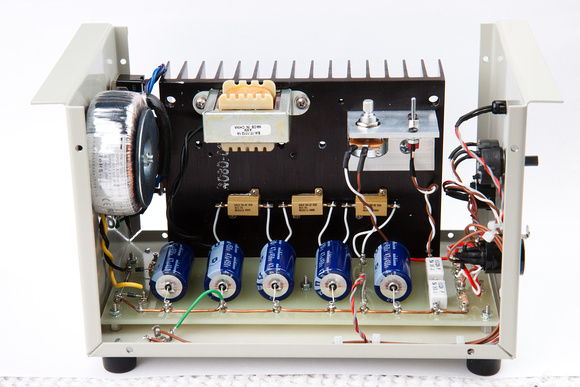ioaudio
Well-known member
The grids are tied together directly on the tube socket fed throught the holes on the pcb (going to the "front" connection to the capsule)
chunger said:Which capsule is being used in your build?
electrisizer said:hello there,
ive used the mk47 in different productions till now and really like what it does! espacially on male voices this mik shines...
theres one thing i would like to change. it has not very much highs! even if the highs sound good and smooth when eq is boosting the dedicated frequencies (in contrast to most cheap miks)... i would like to have the highs right there after recording
is there a resistor determining the highs in this circuit???





The schematic on page 1 of this thread, as noted in the lower left corner, is for the MK47, not the U47. There are a few differences including the tube being labeled as VF14r. No such tube exists, it is the name given to the Vf14 emulation provided by paralleling 2 x 6028 tubes.My3gger said:I guess you are looking at first schematic with VF14 tube, not 6028.
My3gger said:You are right about VF14r, no such tube exists, it's drawn as a replacement for VF14 made out of two 6028 tubes in parallel. Sorry for misinformation, i thought i was looking at redrawn U47 schematic...
G3, cathode and shield are connected together inside the tube, so there can't be any other connection for G3 than this.
http://tubedata.milbert.com/sheets/185/6/6028.pdf
http://www.westernelectric.com/spec_sheets/408A.pdf
I think better question is if G2 is directly connected to anode. Looking at datasheets i don't think you will ruin your tubes by connecting G2 directly to anode. Pictures are good and you might see correct connections from them.
You're not giving me anything I haven't already stated. My question was not "how is g3 connected" my question was "how is the tube actually connected?" I was asking the question in reference to my previous comment outlining that the schematic has g2 and g3 to a and k to -f but this cannot be correct because, as I previously stated, there is an internal connection between g3 and k.Enchilada said:It shows g2 and g3 tied to a but the 6028 has an internal connection between g3 and k.